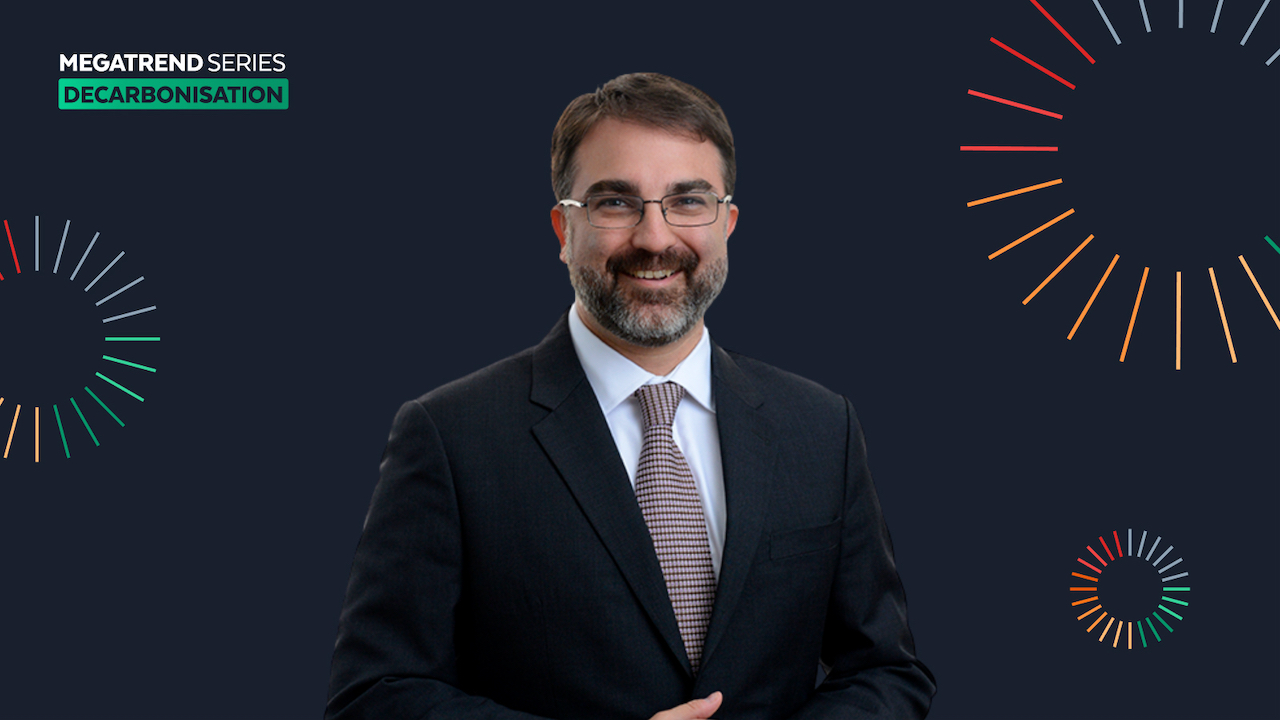A front row seat to the carbon transition

Platinum Asset Management
The world economy emits around 50 billion tonnes of CO2-equivalent greenhouse gases (GHGs) every year, of which 36 billion tonnes is derived from the burning of fossil fuels.(1)
It is now widely accepted the increasing amount of GHGs in the atmosphere is warming our planet and the current level of emissions needs to reduce over the next two to three decades to stop global temperatures from rising to levels that may cause significant disruptive climate change and economic damage. In order to achieve this, the world will need to transition away from fossil fuel-derived energy consumption.
.jpeg)
Energy transitions are not new.
In fact, the world has experienced many over the past centuries including the shift from timber and charcoal to coal when making iron starting in the 1700s, the transition from whale oil to kerosene used for lighting in the 1800s and the transition from steam trains to diesel-electric locomotives in the mid-1900s.
However, past transitions have demonstrated that shifting to new primary energy sources can take long periods of time and occur at uneven adoption rates.
Transitions have also been linked with technological progression and are typically optimised for efficiency, leading to significant surpluses of primary energy.
This allowed for higher consumption and productivity, faster economic growth and better standards of living. This was possible because new sources of primary energy including coal and oil had superior energy density and utility to what it was replacing and advancements were made on how to harness and convert that energy.
Efficiency gains in industrial furnaces, turbine generators and internal combustion engines have seen greater energy extraction from already dense stores of energy and these improvements helped lower the cost of energy.
But the current energy transition is very different.
This time, we are prioritising environmental impact over energy surpluses and efficiency gains. In decarbonising the world’s energy systems, we are not only looking to replace fossil fuel as an energy source but also the entire energy-conversion platform.
This will be hard to do, and have wide-reaching impacts on industrial production methods and how we consume energy today. Societies will have to deal with some trade-offs between the competing objectives of economic growth, a more sustainable energy mix and environmental impacts.
The transition to non-carbon sources of energy will require trillions of dollars of investment each year, however, momentum is building following the commitment from a number of countries to achieve net-zero emissions by 2050.
Progress is already being made in the US, China and some European countries, which have invested significantly in wind and solar capacity to start to decarbonise power sectors. In fact, for the past seven years, there has been more renewable power added to the grid than fossil fuels and nuclear combined.
While this is encouraging; renewables still account for just 10 - 13% of total energy consumed in these countries, suggesting significantly more investment to come.
There will, however, be many challenges to overcome. Geological limitations mean wind and solar installation is unsuitable for some parts of the world, renewable intermittency must be dealt with, and there will be increased requirements for long-distance power transmission to transport renewable energy closer to where it will be used.
The companies contributing to the multi-trillion-dollar transition.
Renewable sources of energy, including wind, and solar and their supply chain are naturally common areas of focus and companies including Vestas and Siemens Gamesa have a pipeline of projects in planning, although recently the sector has been struggling due to inflation impacts and logistics challenges. Integrating large shares of renewable energy into power systems will require the modernisation and expansion of grid infrastructure; and companies like Siemens have solutions for this today.
Grid storage solutions including batteries or hydrogen will be provided by LG Energy Solutions or industrial gas producers like Linde. Enabling all these initiatives, including wind, solar, batteries and hydrogen will require increasing quantities of metals – steel, copper, aluminium, cobalt, lithium, nickel and many others provided by companies such as Glencore, First Quantum and Freeport.
Another major pillar of this transition will be reducing emissions from transport. Replacing petrol and diesel cars with electric vehicle (EV) alternatives is maturing quickly, supported in many countries by government policy and subsidies to encourage consumers to make the switch.
High-profile companies including Tesla may have led the way but traditional car manufacturers such as BMW, Volkswagen, Mercedes Benz and Toyota have made significant investments in EV models which will progressively launch in coming years and provide greater choice for consumers.
The battery supply chain is expanding rapidly and will offer investment opportunities via LG Energy Solutions, SK Innovation, Samsung SDI, CATL and others. Traditional auto component suppliers such as Valeo or Aptiv will play a central role in producing electric motors, power electronics and high-voltage connectors for the electric drivetrain. More powerful batteries and faster EV charging will also require the use of power semiconductors provided by Infineon or ST Microelectronics.
Driving energy efficiency in buildings and housing will also be important. Better insulation will reduce reliance on heating and cooling, a switch to LED lighting uses ~80% less electricity than incandescent alternatives. Smart automation technology allows for more remote monitoring and reductions in electricity consumption. We can identify many companies addressing these areas of the transition such as Schneider Electric, Honeywell or Siemens.
Moving towards a regenerative ‘circular economy’ is another focus for change.
This means conserving resources or doing more with less, designing out waste and pollution, and keeping products and materials in use. Replacing single-use plastics with more sustainable forms of packaging like paper produced by UPM or Suzano will be in high demand. Purchasing from companies that are focused on lowering their product’s CO2 footprint, or providing recycling or re-use solutions to avoid landfill at the end of the product’s life will also be a focus.
Recycling infrastructure and new recycling technologies will need further investment. A growing industry focused on recycling valuable metals from EV batteries will emerge.
The challenge for investors looking at some of these newer areas of change is that business models are still evolving and, in some cases, end-market demand is nascent. Government subsidies may be critical to help fund new industries in their infancy or to incentivise consumers to switch to greener alternatives, but there is a risk that funding may be withdrawn before these industries become self-sustaining.
Large-scale capital projects require significant upfront investment and returns can be long-dated, which could see newly formed companies remain loss-making for the foreseeable future.
This is likely to drive periods of extreme volatility in certain companies’ share prices. However, there are also companies with resilient core operations and strong balance sheets that we believe are best suited to navigate the transition and capitalise on higher growth and change. It is with this in mind, that Platinum plans to launch a carbon transition product in May 2022 (subject to regulatory approval).
This article was written by Liam Farlow and Jodie Bannan, Senior Investment Analyst at Platinum.
A front row seat to the carbon transition
Stay up to date with all my latest insights by hitting the follow button below. You will also be notified of all Livewire content relating to the soon to be launched Carbon Transition product.

Liam joined Platinum in 2014 as an investment analyst covering energy and industrial companies. Previously, Liam worked at Macquarie Group as an equity analyst specialising in materials, as well as in equity derivatives at Westpac. Prior to this,...
Expertise

Liam joined Platinum in 2014 as an investment analyst covering energy and industrial companies. Previously, Liam worked at Macquarie Group as an equity analyst specialising in materials, as well as in equity derivatives at Westpac. Prior to this,...
